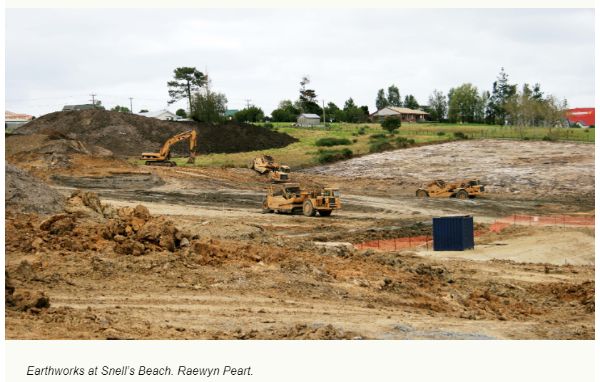Greater Protections Needed For Urban Soil To Safeguard Vital Environmental Services
Healthy urban soil is the unseen engine room supporting the essential environmental services that our cities’ green spaces provide. But urban soil is under pressure from current approaches to residential development.
This finding is revealed in Urban ground truths, the latest report from the Parliamentary Commissioner for the Environment. The report follows on from his 2023 report Are we building harder, hotter cities? The vital importance of urban green spaces and examines the fate of soil and subsoil during the development of new urban subdivisions and residential infill sites.
“For trees and plants to flourish and provide environmental benefits within our cities, they need an adequate volume of nutrient-rich, permeable soil,” explains Commissioner Simon Upton.
“Healthy soil will become increasingly valuable in a warming climate as it supports the vegetation that buffers intense and frequent rainfall events and can mitigate urban heat island effects.”
“We need to ensure that as cities densify the remaining green spaces are high functioning and that means adequate soil of a sufficient depth,” he adds.
“Efforts to increase urban housing supply will place further pressure on soil and subsoil, unless we change how we develop the land.”
Visit our StoryMap
While earthworks are usually necessary during residential developments to meet geotechnical requirements or remove contaminated soil, the report found there are market and regulatory drivers which incentivise removing more soil than is necessary.
“By the time excavators arrive at a subdivision or infill site, key design and construction choices have been made that influence the volume and extent of soil to be removed from or retained on site, with enduring consequences,” the Commissioner says.
Efficiency was identified as a primary driver behind the widespread practice of soil stripping, where all topsoil and large amounts of subsoil are excavated from a site to provide a flat, build-ready platform.
Excavated soil is not necessarily restored during the landscaping stage of development. Research by Manaaki Whenua Landcare Research found that councils across New Zealand have variable rules around the depth and volume of landscaped soils. It also found some specifications were inadequate, restricting the capacity of soils in newly developed sites to soak up excess rainwater and support the growth of larger shady trees.
As a result, the Commissioner recommends that national guidance be issued to provide clarity and consistency on the depth of landscaped soils for grass, green areas and shade-bearing trees within urban developments, as well as desirable canopy coverage. Specifically, he suggests that the recommended topsoil depth for lawns is increased to improve rainfall storage capacity and that soil specifications for trees include both subsoil and topsoil.
The report makes a series of further recommendations to provide greater protections for urban soil during the development process.These include the creation of national guidance to support councils’ management of urban soils, clarification of the roles and responsibilities of regional councils in relation to soil conservation, and implementation of incentives for developers to encourage soil protection and conservation. It also suggests that territorial authorities use tools such as integrated catchment management plans to better coordinate stormwater and soil management with urban growth demands.



 Gordon Campbell: On The Trump Upside, And Peters Persecution Of Trans People
Gordon Campbell: On The Trump Upside, And Peters Persecution Of Trans People Save the City-to-Sea Bridge: Join on Sunday afternoon to save Wellington’s City-to-Sea Bridge
Save the City-to-Sea Bridge: Join on Sunday afternoon to save Wellington’s City-to-Sea Bridge New Zealand Defence Force: Second World War Veterans Receive Message From King Charles
New Zealand Defence Force: Second World War Veterans Receive Message From King Charles New Zealand Government: More Than 900 Health Graduates To Receive Financial Boost Through Bonding Scheme
New Zealand Government: More Than 900 Health Graduates To Receive Financial Boost Through Bonding Scheme New Zealand Police: Stacks Of Cocaine Unpacked In Mt Wellington
New Zealand Police: Stacks Of Cocaine Unpacked In Mt Wellington Te Pāti Māori: Te Pāti Māori Make Submission To Privileges Committee In Absentia
Te Pāti Māori: Te Pāti Māori Make Submission To Privileges Committee In Absentia PSA: PSA Forces Changes To Restructure Of Data & Digital And Pacific Health
PSA: PSA Forces Changes To Restructure Of Data & Digital And Pacific Health


